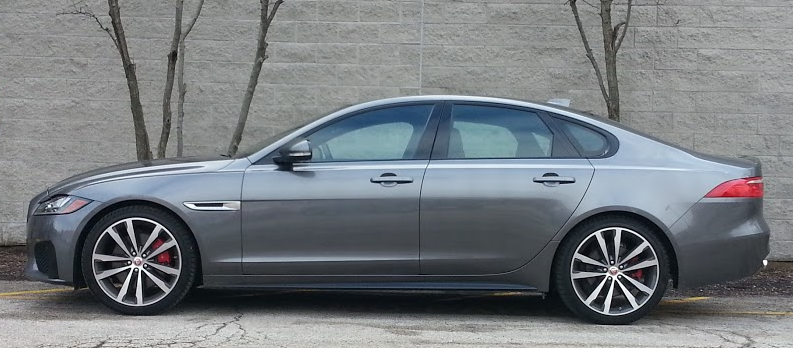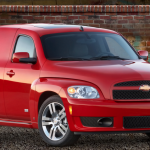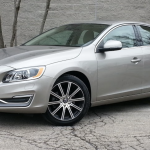
Class: Premium Midsize Car
Miles Driven: 296
Fuel Used: 16.0 gallons
| CG Report Card | |
|---|---|
| Room and Comfort | B+ |
| Power and Performance | B+ |
| Fit and Finish | A- |
| Fuel Economy | C+ |
| Value | B |
| Report-card grades are derived from a consensus of test-driver evaluations. All grades are versus other vehicles in the same class. Value grade is for specific trim level evaluated, and may not reflect Consumer Guide's impressions of the entire model lineup. | |
| Big & Tall Comfort | |
| Big Guy | D |
| Tall Guy | B |
| Big & Tall comfort ratings are for front seats only. "Big" rating based on male tester weighing approximately 350 pounds, "Tall" rating based on 6'6"-tall male tester. | |
Real-world fuel economy: 18.5 mpg
Driving mix: 50% city, 50% highway
EPA-estimated fuel economy: 20/30/24 (city/highway/combined)
Base price: $62,700 (not including $995 destination charge)
Options on test car: Ammonite grey paint ($550), Comfort & Convenience Package ($2000), Head-up Display ($990)
Price as tested: $67,235
Quick Hits
The great: Interior materials, ride/handling, powertrain performance
The good: Passenger room, controls
The not so good: Front corner and side visibility
Check out our Premium Midsize Car Best Buys
John Biel

Jaguar is keeping things light for the introduction of a new generation of its XF midsize sedan for 2016.
Most notably, there’s the manufacturer’s “Lightweight Aluminum Architecture” designed to stiffen the body structure while it sheds pounds—and aluminum components in the front and rear suspension help this Jag stick to its diet, too. Under the hood, things are starting off with a pair of supercharged 3.0-liter V6s of 340 or 380 horsepower but nothing hairier—yet—like the 500-plus-horsepower V8s of the previous generation.
So, easy does it for Jaguar’s redone entry in the premium-midsize segment, right?
Yes—with an asterisk. The line-topping XF S that Consumer Guide® sampled showed itself to be a fine and frisky feline without having to go ridiculously overboard costwise.
The test car was a rear-wheel-drive job with a starting price of $62,700 (all-wheel motivation adds $3000), and a bottom-line tab of $67,235 with delivery and extra-cost paint, head-up display, and a modest package of luxuries added on. XF S basics include a specific front bumper, decklid spoiler, and gloss-black lower-body highlights; red-painted brake calipers; 20-inch alloy wheels; LED adaptive headlamps with automatic high-beam control; “JaguarDrive” variable driving modes; adaptive-damping suspension; brake-enabled torque vectoring; leather upholstery; 14-way-adjustable heated sport-style front seats with memory settings; heated steering wheel; moonroof; keyless entry; rearview camera; driver-condition monitor; lane-keeping assist; blind-spot monitor with closing-vehicle sensing; rear cross-traffic alert; autonomous emergency braking; navigation system; 380-watt audio system with eight-inch touch screen; satellite radio; and Bluetooth connectivity. To this, the $2000 Comfort & Convenience Pack added ventilated seats with three-stage heating and cooling in front and heated rear seats, a power trunklid, and “soft-close” doors.
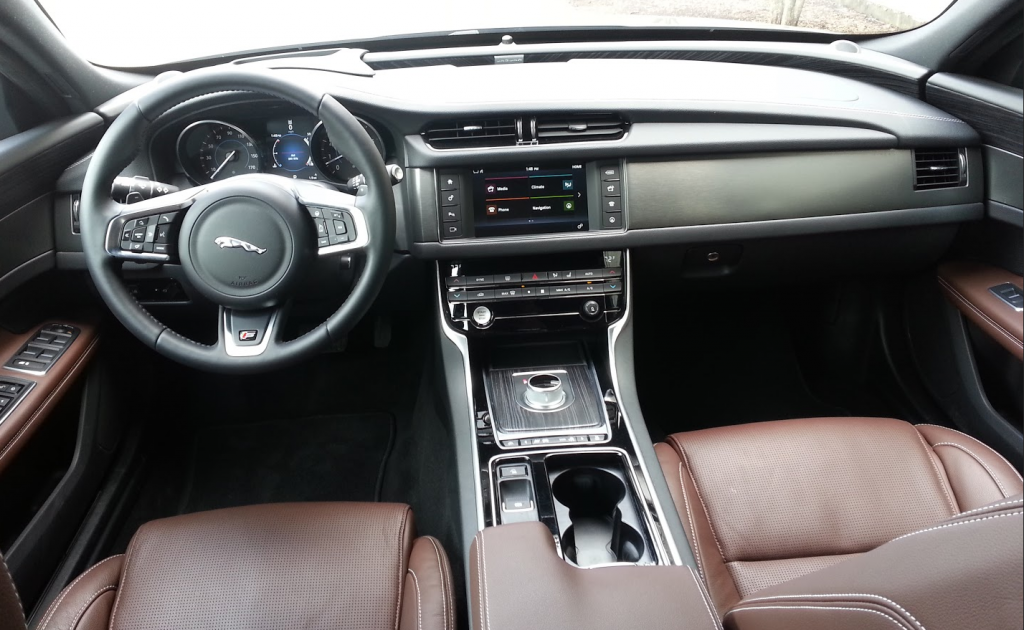
The S is the only one of the four 2016 XF trim levels that comes with the 380-horsepower engine that also generates 339 lb-ft of torque. With “Dynamic” mode activated, it is quick off the line, and delivers abundant, rapidly developed midrange punch in highway driving. The eight-speed automatic transmission, activated by either a pop-up dial in the console or steering-wheel shifter paddles, never seems to be at a loss for the right gear and kicks down smartly for effortless passing. Jaguar says the 3770-pound XF S will go from 0 to 60 mph in 5.1 seconds—though it claims XFs with the 340-horse V6 (which has 332 lb-ft of torque) are just .1 of a second tardier to 60.
Other driving modes are “Normal,” “Winter,” and “Eco.” The last puts a palpable damper on acceleration, but still works fine in urban surface-street commuting for drivers who want to nurse premium fuel when conditions permit. Another standard feature for scratching out gains in gas mileage is engine stop/start. Curiously, stop/start can be voluntarily switched off when the car is in Eco mode or switched on when in performance-oriented Dynamic mode. With some mixing of modes on a 137-mile stint shared with one other CG editor, this driver averaged 17.52 mpg with 65 percent city-type driving. The XF S is rated by the EPA at 20 mpg in the city, 30 on the highway, and 24 combined.
With the various electronic enhancements for ride and handling refinement, the XF S is comfortable and exceedingly competent in Normal mode. Dynamic firms things up a bit for better steering feel, but hitting a pothole or other significant bump will register in the cabin with a little more force. The midsize Jag is very quiet while on the prowl—even the rising engine note when the accelerator is punched is well muted.
Test Drive: 2016 Cadillac CTS 3.6 AWD
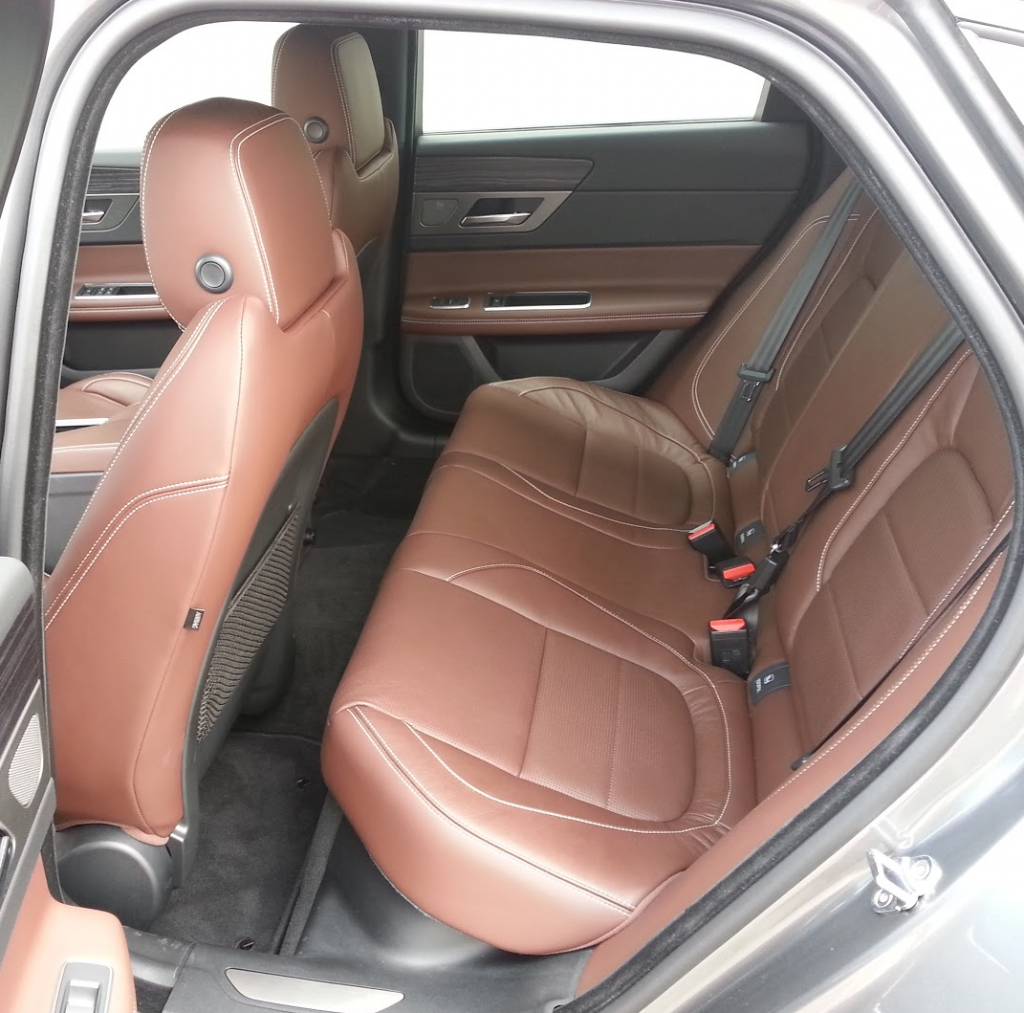
This driver found the front seatbacks to be somewhat stiff, but there was good legroom and all the headroom he needed, even with the moonroof intruding somewhat. However, our “big guy” tester gave the XF low marks for front-seat comfort, citing an intrusive B pillar and insufficient steering-wheel adjustability. Rear seatbacks seemed less resistant to humans, and second-row passengers have pretty good leg- and headroom. A- and B-pillars are fairly thick, restricting driver visibility to a degree, but rear pillars are thinner than in some sedans, permitting pretty good over-the-shoulder vision. Interior materials are high-grade throughout. Soft-touch materials are on most surfaces. Bright-metal trim and a choice of wood, metal, or carbon-fiber accents add to the ambience.
Controls are generally easy to see, but not always easy to use. The vehicle-information display that appears between the speedometer and tachometer dials has a lot of menus for a lot of things activated by one or another of the thumb buttons on the steering wheel. However, unlike certain other luxury-brand cars this driver has been through lately, the XF blissfully manages to get by without some sort of central controller with an evil mind of its own for audio, navigation, and other functions. The touchscreen offers clearly defined options that open at a tap. Radio presets could be tuned directly and saved with a simple press of a fingertip.
Test Drive: 2015 Lexus GS 350 AWD F Sport
Cabin storage is about average. The glove box is sizeable but the console box is small—though it houses auxiliary and USB ports, a card slot for the navigation system, and a power point. All doors have substantial map pockets, and there are twin cupholders hidden in the console and built into the pull-down center armrest in the rear. Net pouches are on the backs of the front seats. Meanwhile, the flat trunk floor sits somewhat high, which should make loading and unloading a little easier, but somewhat restricts the height of objects placed there. However, the space is fairly wide with little intrusion from the wheel houses. Rear seats fold in a 40/20/40 split. They’re nearly flat when down but they rest about 1.5 inch below the level of the trunk floor.
At first glance, the XF’s redesign is so subtle that it’s hard to see what’s changed. Get behind the wheel, however, and the new XF’s charms become apparent. It’s a compelling alternative to its Audi, BMW, Mercedes-Benz, and Cadillac rivals. Go easy on the options, and the XF is a surprisingly good value as well.
Big & Tall Note:
Though the XF cabin is relatively roomy, the vehicle’s front-door openings are very small for a car of this size. The narrow passage complicates entry and exit for both bigger folks, especially those wide at the shoulders.
